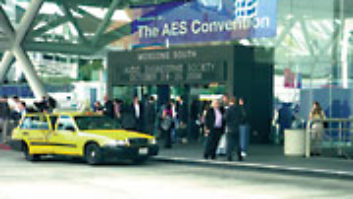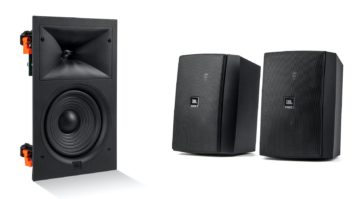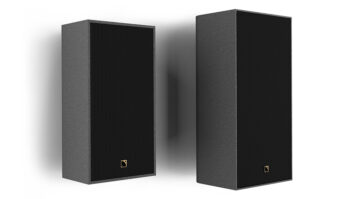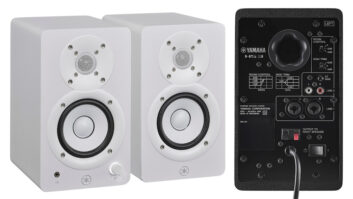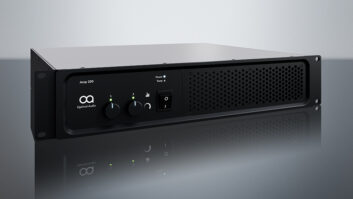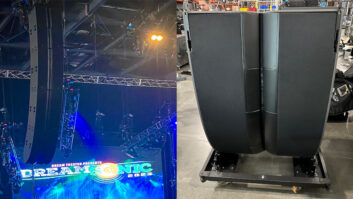NHT has long been known as an innovative company that set its own destiny, often doing things differently. One such example is the company’s acclaimed A-20 monitor system, with an external bi-amplification/crossover package that allows users to make HF/LF setup and compensation decisions from the listening position rather than tweaking controls on the back of the speaker, where direct A/B comparisons would be impossible.
In any loudspeaker system, the crossover has traditionally been the weakest link that limits system performance. No driver can deliver all frequencies in the hearing band, so some combination of LF and HF components are required for full-range reproduction. In the analog domain, the simplest crossover (a basic first-order -6dB/octave filter) should create the least interference in terms of phase distortion. However, the slope of a dividing network such as this is too shallow, leading to the need for more complex designs, which provide more precision with steeper crossover slopes but create more problems with phase and image shifting.
Three years ago, NHT partnered with two other small companies with unique core technologies — PowerPhysics (www.powerphysics.com) and Australia’s DEQX (www.deqx.com) — to develop the Xd Series, a DSP-corrected active speaker system. NHT would focus on transducers and enclosures; Power Physics would provide high-quality digital amplification; and as you could infer from its name, DEQX (Digital Equalization and Crossover) supplied DSP and software support. The goal was to build a small, high-output, low-distortion system with equalization control for placement compensation while correcting for response and phase anomalies, thus eliminating the tightly defined listening sweet spot and providing a wide, accurate soundstage from anywhere in the listening environment. Other enhancements would include allowing for future DSP tasks such as room correction, custom EQ curves for each listener, etc. Moreover, the system would be applicable to consumer and professional monitoring speakers.
Examining the drawbacks of existing PWM (Pulse Width Modulation) digital switching amplifier designs, Power Physics developed a new nonlinear control method (U.S. patent #6084450). This One-Cycle Sound™ approach monitors the switched variable on a cycle-by-cycle basis, so in each cycle, the average value of the output (power to the speaker) equals the control reference (audio input signal). This rejects power supply disturbances, non-ideal switching edges, component variation with temperature and other distortion-creating problems in typical PWM amps.
Great amps and transducers are certainly part of the equation, but the “magic” in the Xd system comes from DEQX’s proprietary algorithms that provide high-resolution filtering with low latency. Typically less than 10 ms from input to output, such low-latency performance permits synching with virtually any video signal and opens the door for developing even more complex filter sets that could sync with any video signal. The DEQX processor achieves flat frequency response while correcting for speaker irregularities through the use of linear phase, high-slope crossovers (up to 300 dB/octave) that improve driver control and system output while virtually eliminating comb filtering and audible rippling in the frequency and phase response in the crossover region. Such high-slope crossovers minimize the effects of driver overlap while maintaining flat system frequency and phase response over a much wider area than is possible with conventional crossovers.
“NHT’s Xd technology responds to demands for high-performance smaller systems with a wider soundfield that remains precise and accurate no matter where the listener is situated,” says NHT co-founder Chris Byrne. A few months ago, I auditioned some Xd speakers first-hand. The results were remarkable, to say the least. With two speakers on stands, well away from walls and corners and about 12 feet apart, I could still perceive a solid stereo image even standing a foot to the right of the right speaker, with the left speaker 13 feet away! In a near-field situation, this could permanently put an end to that “Where does my mix go when I reach to EQ channel 1?” syndrome we all know.
Rather than the usual approach of “recycling” a consumer design into a pro monitor, NHT’s new Xd monitors are built from the ground up for pro users.
Housed in a futuristic-looking, very nonparallel enclosure, the M-20 near/mid-field monitor has a flat, wide baffle across the tweeter and a narrower baffle surrounding the low-distortion woofer. NHT’s XdA DEQX-calibrated amplifier/processor sends up to 150W to each of the four drivers in a 2-channel system and provides four presets for different boundary conditions. Room correction and multiband parametric EQ will be offered in the near future as a software add-on. A 2-channel system is $3,800, including the XdA amplifier/controller.
Designed for high-SPL playback, the M-80 tracking monitor has dual 8-inch magnesium-cone woofers, two 2-inch dome mids and a 1-inch dome tweeter. The $7,000 stereo package includes 1,100 watts of tri-amplification and DEQX processing with four switchable boundary positions, parametric EQ and room correction. A powered, dual-12 subwoofer is optional.
The M-20 and M-80 monitors debut at AES in San Francisco. For more information, visit NHT Pro at www.nhtpro.com.
George Petersen isMix‘s editorial director.

